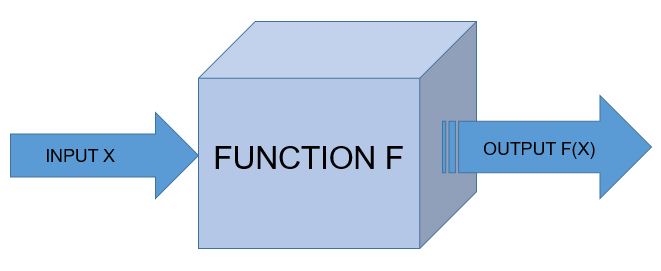
Function
A function is the simplest callable object in Python.
NOTE: For Indentation either use TAB space or 4 space characters, never both.
def tax(bill):
“””Adds 25% tax to a restaurant bill.”””
bill *= 1.25
print “With tax: %f” % bill
return bill
def tip(bill):
“””Adds 35% tip to a restaurant bill.”””
bill *= 1.35
print “With tip: %f” % bill
return bill
meal_cost = 100
meal_with_tax = tax(meal_cost)
meal_with_tip = tip(meal_with_tax)
Function Syntax
def spam(): /*Header*/
“”” This is spam function””” /* Comment*/
print “Spaceship!” /*body*/
spam()
Call and Response
def square(n):
“””Returns the square of a number.”””
squared = n**2
print “%d squared is %d.” % (n, squared)
return squared
square(5)
Parameters and Arguments
A function can require as many parameters as you’d like, but when called the function, it should generally pass in a matching number of arguments.
def power(base, exponent): # Add your parameters here!
result = base**exponent
print “%d to the power of %d is %d.” % (base, exponent, result)
power(20, 6) # Add your arguments here!
Functions Calling Functions
A function can call another function.
def n_plus_one(n):
return n + 1
def couple_add(n):
return n_plus_one(n) + 2
Importing Module
A module is a file that contains definitions, including variables and functions, that we can use once it is imported.
import math
print math.sqrt(25)
math includes a number of useful variables and functions, and sqrt() is one of those functions. In order to access math, all you need is the import keyword. When you simply import a module this way, it’s called a generic import.
It’s possible to import only specific variables or functions from a given module. Pulling in just a single function from a module is called a function import.
# Import *just* the sqrt function from math
from math import sqrt
if we want all the variables and functions in a module but don’t want to have to constantly type math then we can use
# Import *everything* from the math module
from math import *
Built-in Functions
max()
The max() function takes any number of arguments and returns the largest one.
>> maximum = max(10,35,64)
>> print maximum
min()
min() function returns the smallest of a given series of arguments.
>> minimum = (10,35,64)
>> print minimum
abs()
The abs() function returns the absolute value of the number it takes as an argument, it gives the number’s distance from 0 on an imagined number line.
>> absolute = abs(-42)
>> print absolute
type()
The type() function returns the type of the data it receives as an argument.
>> print type(42)
>> print type(4.2)
>> print type(‘spam’)
Now let us see the code which returns biggest, smallest and absolute values.
def biggest_number(*args):
print max(args)
return max(args)
def smallest_number(*args):
print min(args)
return min(args)
def distance_from_zero(arg):
print abs(arg)
return abs(arg)
biggest_number(-105, -53, 51, 100)
smallest_number(-106, -55, 54, 105)
distance_from_zero(-104)
These are some of the functions and built-in functions in python.

Facebook Comments